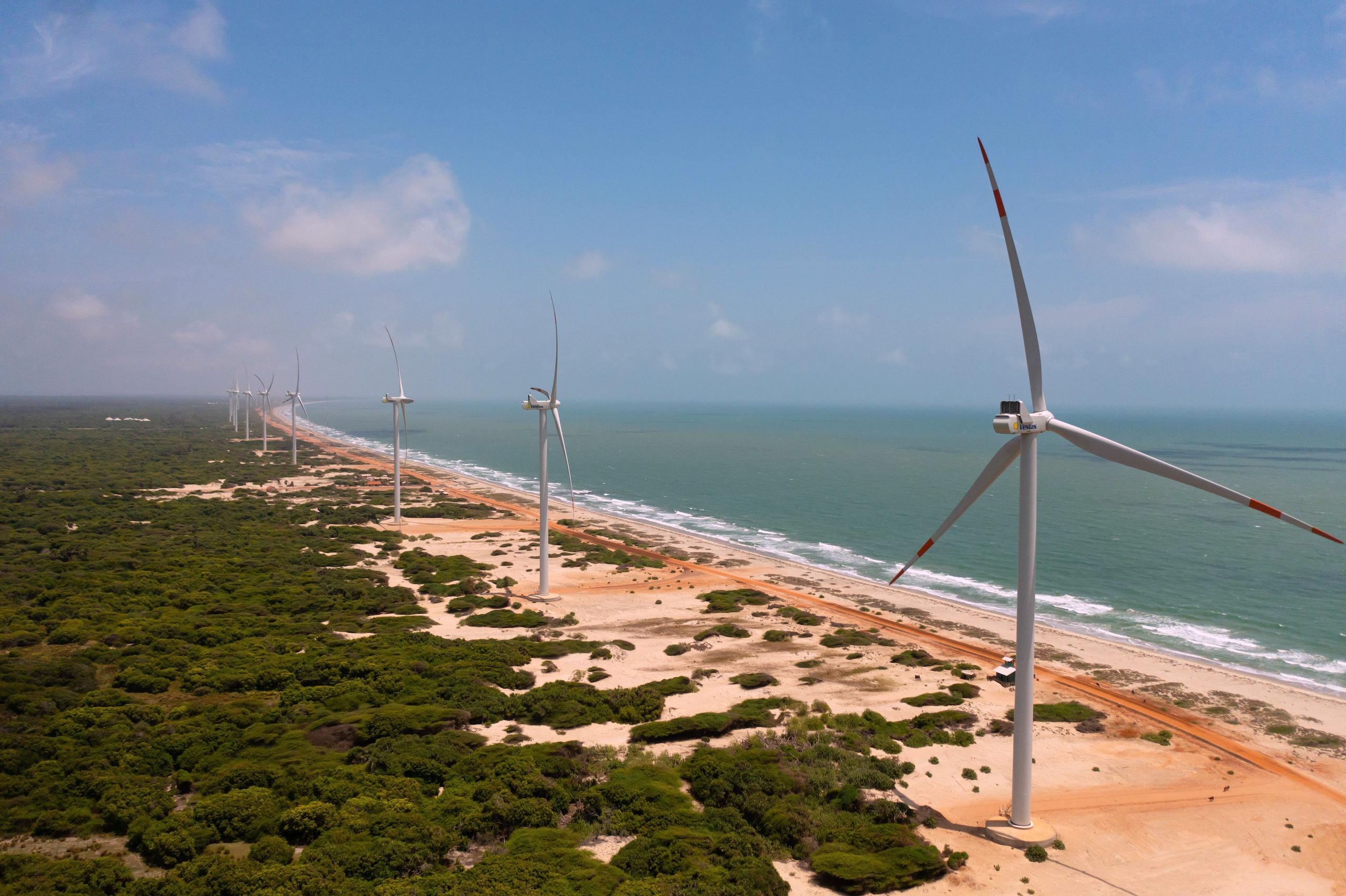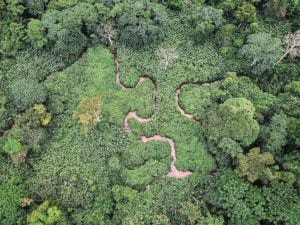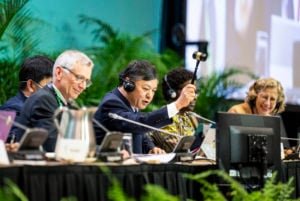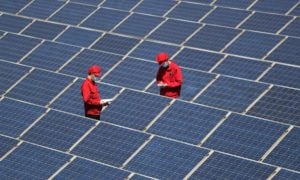China could play a crucial role at an upcoming global financial summit that aims to help developing countries address a series of crises including climate change, experts have told China Dialogue.
The summit for a new global financial pact will be held in Paris on June 22 and 23. The French hosts are seeking reform of the global financial system so that developing countries might better face the challenges of climate change and sustainable development.
Nearly 70 countries are facing debt crises, with many of them also on the frontline of extreme weather events and struggling to meet the UN Sustainable Development Goals, a collection of 17 targets adopted by all United Nations’ member states in 2015.
Shaking up the status quo
The summit was first proposed by French President Emmanuel Macron in November last year after the COP27 climate talks in Egypt and the G20 summit in Indonesia.
There were strong calls at both events for countries to come together and realign the support of international financial institutions for low-income and vulnerable countries. Many agreed the current system can no longer help these countries develop their societies and economies while dealing with a so-called “polycrisis” involving Covid-19, Russia’s invasion of Ukraine, energy supplies, and currency inflation, which have brought compounding effects on countries.
More than 100 heads of state and government are expected to attend the event, including Mia Mottley, Barbados’s prime minister, who has been central to putting financial reform on the climate agenda, Ali Bongo Ondimba, president of Gabon, and Ursula von der Leyen, president of the European Commission.
China confirmed its participation in April through a Sino–French joint statement released during Macron’s state visit to the country. It also “indicated” that its representation would be “at high level”. However, it remains unclear whether Xi Jinping, China’s president, will travel to Paris.
The summit builds on the Bridgetown Initiative, an action plan launched by Mottley at COP27. It urges an overhaul of global monetary arrangements that are based on a system established some 80 years ago.
One focus is the reform of multilateral development banks (MDBs). These institutions, such as the World Bank, provide longer-run, affordable financing to governments for projects that the private sector would not finance, such as roads, railways and bridges.
Currently, the MDBs “aren’t large enough to meet needs”, Kevin Gallagher, director of the Boston University Global Development Policy Center, tells China Dialogue.
MDBs aren’t large enough to meet needsKevin Gallagher, Boston University
Furthermore, their policies “are not consistent with green and inclusive development”, Gallagher notes. A third problem is that the “voices and representation of the developing countries are small relative to the Western powers that do not borrow”, he continues.
Mottley underlined another problem at COP27: “The global north borrows with interest rates between one and four percent. The global south, around 14%. And then we wonder why energy partnerships are not working.” Moreover, high inflation means the cost of borrowing is growing.
These issues were spotlighted in April at the spring meetings of the World Bank and the International Monetary Fund (IMF), an agency of the United Nations, which monitors the international financial system and global economic development. The World Bank’s steering committee and US treasury secretary Janet Yellen both urged further reforms this year to improve the bank’s response to climate change and other challenges.
At a webinar earlier this year, French officials announced the priorities for the summit of a new global financial pact:
• To restore fiscal space to countries facing short-term difficulties, especially the most indebted countries
• To foster private sector development in low-income countries
• To encourage investment in “green” infrastructure for the energy transition in emerging and developing countries
• To mobilise innovative financing for countries vulnerable to climate change.
Too much debt, too little climate finance
Kevin Mo, principal of the Institute for Global Decarbonization Progress (iGDP), a green consultancy with offices in China and Europe, tells China Dialogue that the Paris summit has a clear goal: to reach consensus on debt restructuring and climate finance. The former involves changing the terms on loans to make them easier to pay back.
The lack of climate finance has been a long-standing issue and the core of international climate negotiations for more than a decade.
The main sticking point is the fact that developed countries, the main greenhouse gas emitters historically, fell short on delivering a pledge they made in 2009 to provide US$100 billion in climate finance to developing countries every year by 2020. The money was meant to support the latter to adapt to the impacts of climate change and reduce emissions.
Developed countries were pressured at last year’s climate talks in Egypt to set up a separate “loss and damage” fund to help vulnerable countries deal with the irreversible consequences of climate change, such as rising sea levels. But it remains unclear which countries will pay and how big the fund will be.
In addition to insufficient climate finance, a debt crisis started to unfold among developing countries in the wake of Covid-19, complicating their efforts to achieve net zero.
“A key point here is that debt in African countries isn’t growing from excess borrowing. It’s growing because interest rates are going up,” Jade Scarfe, an analyst at Development Reimagined, a development consultancy with offices in China and Africa, tells China Dialogue.
Financial institutions around the world have been increasing their interest rates in a bid to cool inflation driven up by Covid-19 and the war in Ukraine. As a result, developing countries’ debt also went up.
The debt crisis is deeply connected to the world’s fight against climate change because the countries mired in debt are often the ones most vulnerable to climate change. Sri Lanka and Zambia are two such nations. Both have defaulted, meaning it will be harder and more expensive for them to get loans if they are hit by disasters.
Pakistan is another example. Already straddled with debt, it was devastated by floods last summer that caused more than $10 billion of damage and pushed it further towards defaulting.
When countries struggle to pay off debt, they have less money to invest in decarbonisation, adaptation and other means of responding to climate change. For example, Nigeria, which witnessed its worst floods in decades last year, had to spend 96% of every tax dollar servicing debts.
China has ‘a huge role to play’
For about two years now, creditor nations and multilateral lenders have been trying to find ways to restructure the hundreds of billions of dollars of debt owed by developing countries under the G20’s Common Framework for debt treatment. But the talks have been in a logjam.
Martin Kessler, executive director of Finance for Development Lab, a Paris-based think-tank, tells China Dialogue that China has “a huge role to play” at the Paris summit because it is one of the largest economies in the world and the main bilateral lender to developing countries.
Kessler says there is a big gap between the Chinese view and that of the Paris Club, an informal group of creditor nations formed in 1956, whose role is to find workable solutions to payment problems faced by debtor nations. Paris Club membership is dominated by developed, global north countries.
China is facing increasing pressure from the US and other western nations to reduce the amount of money owed to it by some of its debtors. But China insists that the MDBs and other lenders should also provide debt relief and restructuring. This jars with received wisdom in Western capitals that the MDBs should be exempt from debt-relief requirements in order to maintain their top credit rating, which is required for them to offer concessional loans – made on more favourable terms than market loans – to development projects.
“The question is how China… can join the club to better the common framework for debt restructuring?” says Kessler.
Some experts point out the need to recognise differences and work towards an agreement based on that.
The way China handles loans, such as its lending models and classification of sovereignty and commercial debt, are different from the traditional ways followed by members of the Paris Club, Kevin Mo of iGDP says. He believes the negotiations between China, the Paris Club and private sector creditors are “a process of reaching a new consensus” on debt management.
The fact that China plans to send “high level” representatives to the Paris summit shows its willingness to discuss debt restructuring, Mo states.
He adds that if different parties can form “some” agreement and achieve “quick wins” on climate financing and debt restructuring in Paris, this could gather momentum for the G20 summit in India in September and COP28 in Dubai in November and December.
Opportunities for ‘constructive collaboration’
Kessler highlights a specific way in which China can contribute: Special Drawing Rights (SDR), a type of reserve asset issued by the IMF.
In 2021, the IMF issued $650 billion worth of these assets to its member nations to help them recover from the pandemic. However, due to its quota system, which is based on the size of a country’s economy, African countries received just $33 billion, or 5% of the total.
Later that year, China said it was “ready to” channel $10 billion worth of its SDR, or a quarter of its allocation, to African countries to support their recovery.
Kessler believes there are “a lot of” opportunities for “constructive collaboration” between China and other parties, particularly the rechannelling of the SDR.
A recent report co-published by his organisation and Development Reimagined proposes that China divert the $10 billion through the African Development Bank – instead of the IMF – to ensure these loans really go to Africa.
Gallagher of Boston University says China can continue advocating for policies to resolve the issues of the MDBs in Paris.
“They have been an advocate for increasing the paid-in capital of the MDBs, shifting the policies toward infrastructure and industry and pushing for more voice for the poor,” he notes, adding that China can also create its own institutions to give developing countries “more options and the MDBs a better model”.
To Gallagher’s knowledge, China has played a “strong role” in the summit from the beginning. “Not only will China be there but they have scheduled a follow-up meeting to make sure the decisions at the summit get implemented,” he reveals.
Multiple Chinese scholars state that China can chip in by stepping up its green investment in other developing countries, especially by leveraging the resources of the public and private sectors in China and the recipient nations. This pertains especially to the development of renewable energy, a field where Chinese private companies are global leaders.
Professor Wang Yao, director-general of the International Institute of Green Finance, underscores China’s “important role” in promoting green finance globally. In particular, she points to the importance of the summit and climate cooperation being mentioned in the Sino–French joint statement.
Wang tells China Dialogue that the messages “fully demonstrate the two countries’ determination and willingness to cooperate” in helping developing countries and emerging economies address financing difficulties, encouraging them to speed up their energy transition and supporting their sustainable development.
She adds that China can share its experience of developing green finance with other developing countries and help create global standards of green finance through international exchanges and cooperation.










